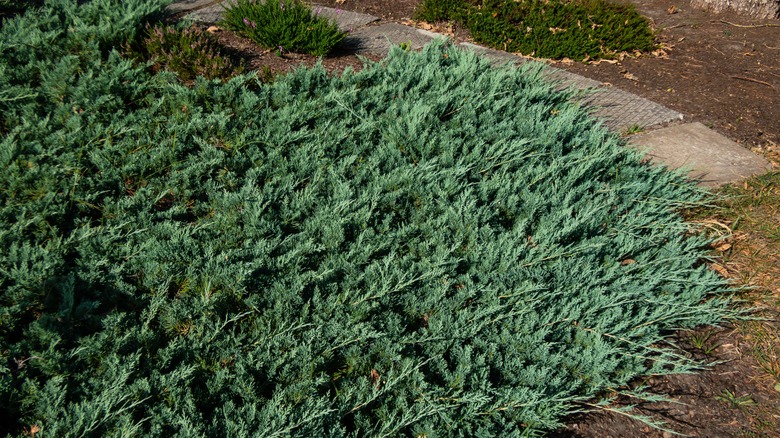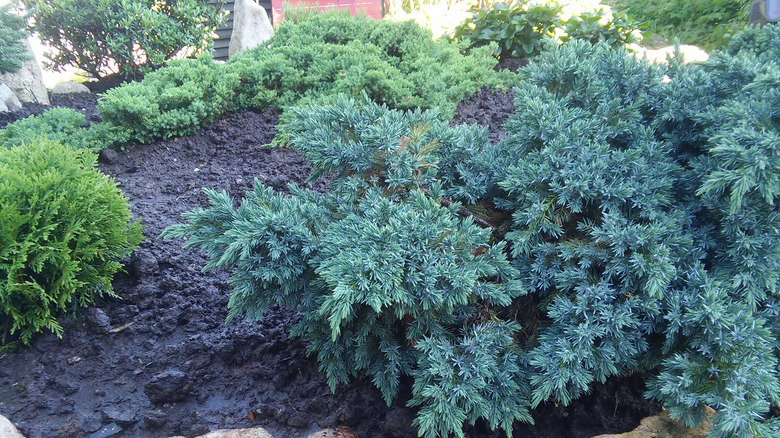Why You Should Consider Growing Creeping Juniper If You Have A Sloped Yard
There are a few benefits to sloped yards, They offer great water drainage and some pretty amazing views. However, the negatives often outweigh the pros, especially when it comes to taking care of your yard. While you can plant grass, it's not always fun to mow, and over time, you may lose a lot of your soil due to erosion. If you do have a sloped yard, though, not all hope is lost. There is one plant that acts as ground cover while helping to fight against erosion: creeping juniper. Even its scientific name is reflective of how well it does spreading across the ground, Juniperus horizontalis.
Creeping juniper is perfect for a sloped yard thanks to its roots. They are capable of holding on to the soil, working somewhat like a net. When the juniper gets established, it stops the loose soil from moving, reducing erosion — especially due to rain and floodwater. As an added bonus, juniper in your home garden also helps to repel ticks and fleas. Normally, it's recommended you plant a few bushes around your yard, but using the creeping version as ground cover is just as effective.
Another benefit to creeping juniper is that it's an evergreen. It stays beautiful and green all year long, even in dry and cold areas. The plants do best in hardiness zones 3 through 9, though they can tolerate a little outside of that zone. Even if you don't know the plant hardiness zone you live in, or what it means, you have a good chance of creeping juniper taking off when it's planted. Though they thrive in vast environments, they aren't invasive, unlike the common honeysuckle plant you don't want to see in your garden.
What you need to know about planting creeping juniper in your yard
If you're going to plant creeping juniper, there are some things you should know. For one, they prefer hot, dry areas, so if you have parts of your yard that tend to stay moist, your potential ground cover won't do well. Additionally, while they can handle a small amount of shade, they much prefer full sun. They're strong and sturdy pants that need little maintenance and no mowing.
There are a few varieties of creeping juniper, with different leaf shapes and colors. Any cultivar choice works, and you can easily pick one simply based on the leaf shape or color. If you're looking for a perfect ground cover plant and you want the easiest option, the Wiltonii variety is the best. It gets its common name, blue rug, because of how it sticks low to the ground and spreads out. One plant doesn't get much higher than 4 inches tall but can spread out up to 6 feet from where it's planted. Additionally, while all juniper enjoys dry conditions, this one takes it a step further, able to handle even more desert-like temperatures. The leaves start off silvery-blue, but may turn slightly purple in the winter.
This is also an excellent plant to grow if you enjoy having wildlife in your yard — especially if yours produces berry-like seeds. Many animals eat from the plant, such as deer and birds. Additionally, smaller critters, like voles and insects, use this plant to hide and call home.

